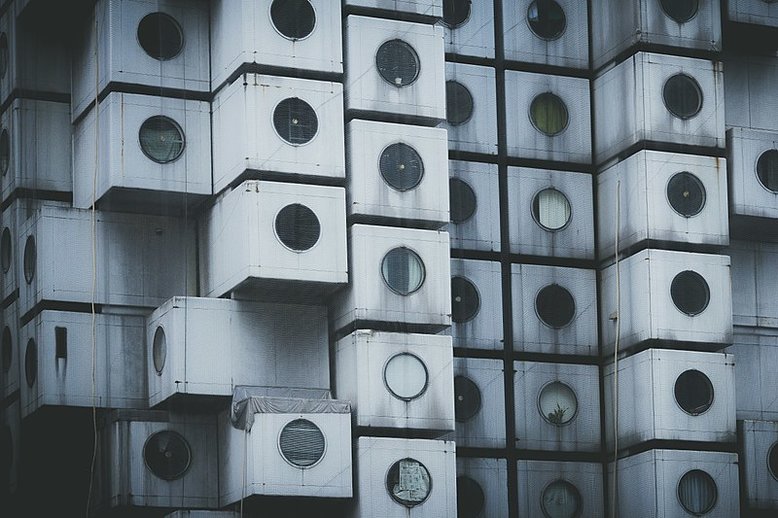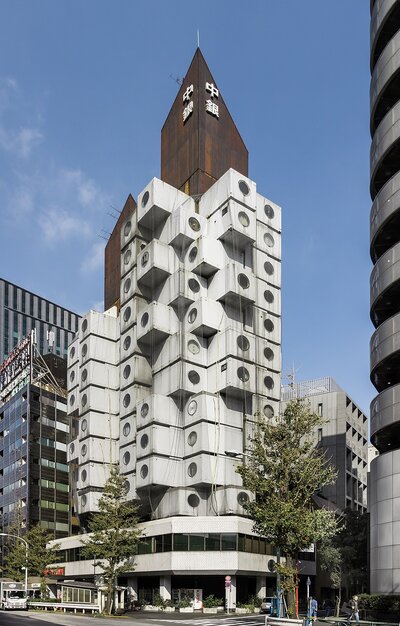It is perhaps an example of Kurokawa's stunning prescience that this building does not look out of place today, as capsule hotels abound all across Japan. Radically, the capsule's small interior meant that the building was designed for individuals, rather than families.
Like many others in his time, Kurokawa emerged from Japan's post-war years with philosophies that took into account the idea of impermanence. A witness himself to the firebombing of Nagoya, he, amongst practically everyone else in Japan, certainly knew what it meant to start from scratch. He had once theorised that buildings should be pre-packed with dynamite in their foundations in preparation for their eventual destructions. But before you start shifting in your seat on account of whether or not that trend has caught on, you can rest easy. It hasn't.
Kurokawa did eventually account for the impermanence of the building in a different way — as the post-war years brought about the problems of scarcity of the best materials, individual capsules were meant to be replaced as their conditions deteriorated, in line with Metabolism's ideas of regeneration.
It is perhaps eventual then, and also, a little bit ironic that the ageing facilities of the building led residents voted to demolish the building in its entirety in '08, only for it to receive a stay of execution due to the global financial crisis that year.

Resembling more an ageing relic than a symbol for an imagined future, many of the capsules exteriors are streaked with dark stains, and some of the buildings portholes have been boarded up. Rooms are crumbling, there is the existential threat of asbestos, hot water to the individual bathrooms have been shut off, leaving many of its residents to use the heated communal shower on the ground level.
No surprise then that this is one of the last remaining bastions of Metabolist architecture, for the reason that practical realities such as hot water et al. trump practical realities of preservation. Today, the building's fate is still up in the air, with whispers of shadowy backroom renegotiations that will either preserve the building or demolish it under the euphemism of 'redevelopment'.
And yet, the few, who see the building as a work of art, make a pilgrimage as appreciative acolytes, so much so that the building's doorman has been battle-hardened in the art of politely and firmly denying unscheduled visitors to the building. There are guided tours if you are so inclined.
Regardless of what eventual fate the building might suffer, it is perhaps only appropriate that we will one day, see a world where there are no traces left of Metabolism. Its ideas came out of a much different Japan, one that was grappling with the hard realities of post-war reconstruction. The Japanese idea of impermanence, however, is still very much a modern reality. They have a word for it. Mujō(無常). The grand shrine in Mie, Ise Jingū, is destroyed and rebuilt every 20 years. If the Nakagin Capsule Tower is to be destroyed, some new form will emerge from it and be reborn.
Next, find out where is the mysterious disappearing angel road.




